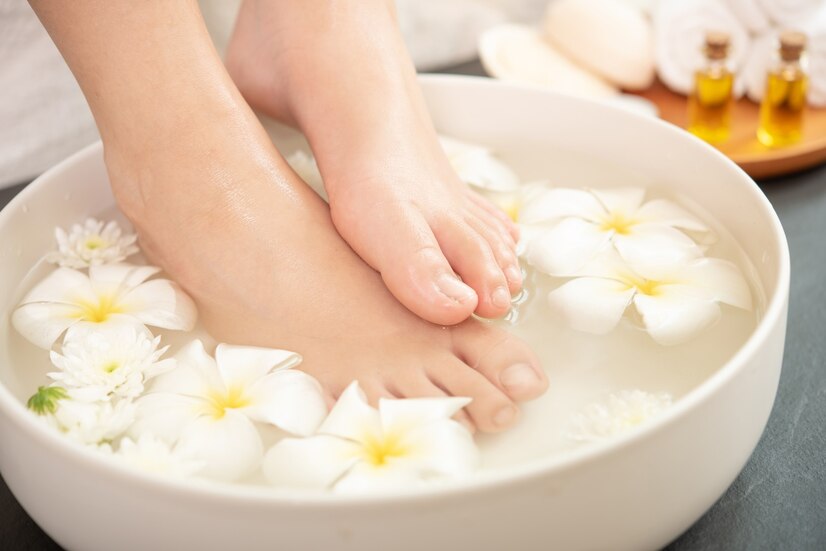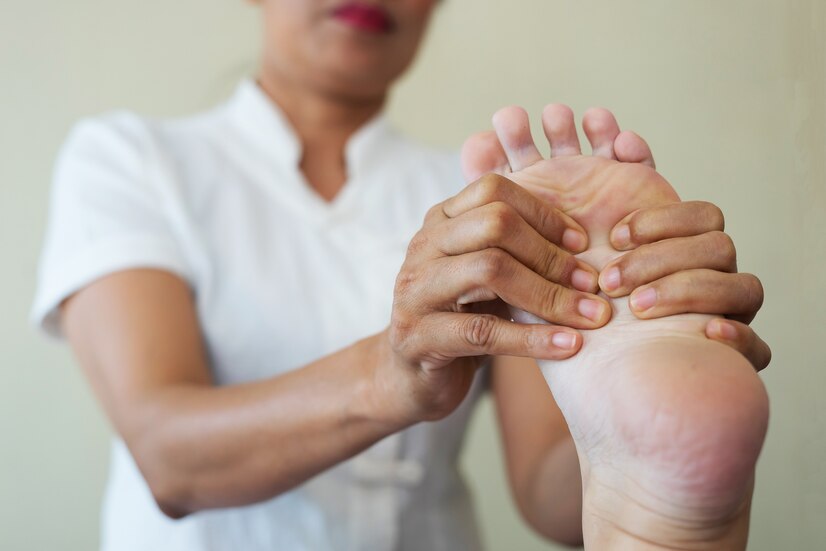Regarding foot health, warts can be an unpleasant and bothersome condition. These small, rough growths on the skin of the feet are unsightly and can also cause discomfort and pain. In this comprehensive guide, we will explore the causes, treatment options, and prevention strategies for foot warts, providing you with expert insights from the expert Dr. Jasdeep Sidana.
Understanding Foot Warts
Types of Foot Warts
Plantar Warts
These warts are the most common type and usually appear on the soles of the feet. They can be flat or slightly raised, often with a rough texture. Plantar warts may have black dots, which are clotted blood vessels, giving them a characteristic appearance.
Verrucas
Verrucas, also known as plantar verrucas or plantar warts, develop on the toes or the ball of the foot. They can be painful, especially when walking or standing. Verrucas may have a cauliflower-like appearance and can cause discomfort due to pressure exerted on them.
Mosaic Warts
Mosaic warts refer to a cluster of plantar warts that form a larger, irregularly shaped lesion. These warts can be more challenging to treat due to their interconnected nature.
Periungual Warts
Periungual warts develop around or under the toenails or fingernails. They can be particularly bothersome and may cause nail deformities if left untreated.
Filiform Warts
Filiform warts are long, slender warts that typically grow on the face, neck, or eyelids. However, they can also occur on the feet. These warts have a thread-like or finger-like appearance.
Causes and Transmission
To better understand foot warts, it’s crucial to grasp how they are transmitted. Dr. Sidana explains that HPV is highly contagious and can be easily spread in warm, moist environments such as swimming pools, locker rooms, and communal showers. People with weakened immune systems or small cuts on their feet are more susceptible to contracting foot warts.
Identifying Foot Warts
Recognizing foot warts is essential for early intervention. Look out for common signs and symptoms, including small, grainy bumps on the soles of the feet, black dots (clotted blood vessels), and tenderness or pain when walking or standing. Differentiating foot warts from other skin conditions, such as corns or calluses, is important and requires different treatment approaches.

Treatment Options for Foot Warts
Home Remedies and Over-the-Counter Treatments
Many individuals opt for self-treatment using over-the-counter remedies. One popular approach is salicylic acid-based solutions, which gradually break down the wart tissue. Another option is cryotherapy, which involves freezing the wart with a specialized freezing agent. Dr. Jasdeep Sidana advises caution when using these treatments, as they may not be suitable for everyone and could lead to skin irritation.
Medical Interventions
In cases where home remedies prove ineffective or the warts are causing significant discomfort, it’s time to consult a healthcare professional. Dr. Jasdeep Sidana explains that prescription-strength treatments, such as topical creams containing stronger concentrations of salicylic acid, may be recommended. Additionally, certain surgical procedures, such as laser therapy or excision, may be performed by a podiatrist to remove the wart completely.

Prevention Strategies
Maintaining Good Foot Hygiene
Practicing good foot hygiene is essential for preventing foot warts. Dr. Jasdeep Sidana emphasizes the importance of regular washing and drying of the feet, especially after spending time in public places. Additionally, choosing footwear that provides proper support and breathability can help reduce the risk of developing warts.
Minimizing Exposure to HPV
Since HPV is the primary cause of foot warts, minimizing exposure to the virus is crucial. Dr. Sidana advises avoiding direct contact with surfaces that harbor HPV, such as communal showers or pool areas. It’s also important to prevent cuts or abrasions on the feet by wearing protective footwear, such as flip-flops, in public areas.
Boosting the Immune System
Maintaining a healthy immune system can make a significant difference in preventing foot warts. Dr. Jasdeep Sidana recommends a healthy lifestyle, including regular exercise, a balanced diet, and adequate sleep. A strong immune system can help fight the HPV virus and reduce the likelihood of developing foot warts.
Regular Foot Examinations
Performing regular self-examinations of your feet can help detect foot warts at an early stage. Dr. Jasdeep Sidana advises checking the soles of your feet and between your toes for any unusual growths or changes in the skin. Early detection allows for prompt treatment and prevents the spread of warts to other areas of the feet or to other people.
Avoiding Sharing Personal Items
To minimize the risk of spreading foot warts, avoiding sharing personal items such as socks, shoes, or towels with others is important. Dr. Jasdeep Sidana explains that these items can potentially harbor the HPV virus and increase the chances of infection.
Conclusion
Foot warts can be a bothersome condition affecting your feet’ appearance and comfort. Understanding the causes, treatment options, and prevention strategies discussed in this comprehensive guide can help manage foot warts effectively. However, consulting a healthcare professional, such as a podiatrist, is important for a proper diagnosis and personalized treatment plan. By following the expert advice of Dr. Jasdeep Sidana and implementing preventive measures, you can reduce the risk of foot warts and maintain optimal foot health.


Your comment is awaiting moderation.
Budget car hire, with minimal expenses.
toyota rental car https://www.neochorion.com /our-cars/?view=cardetails&carid=13/ .